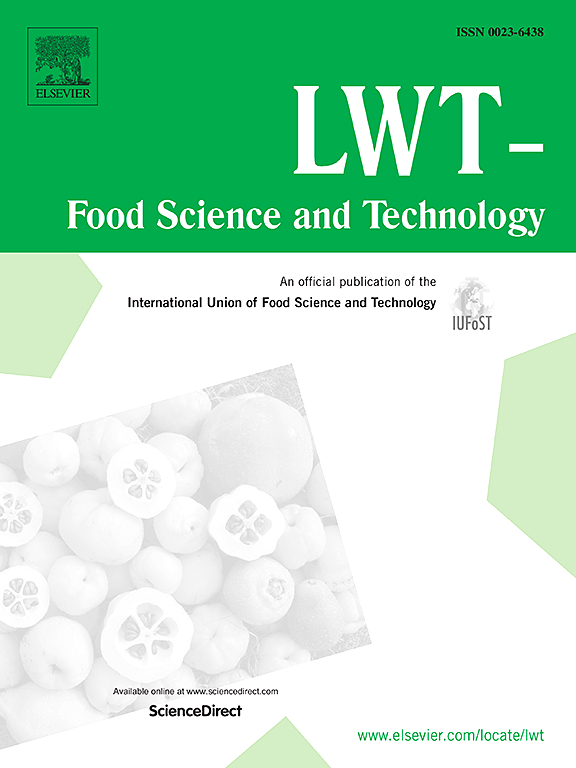Uncovering bioactive flavones and volatiles in rice (Oryza sativa L.) leaf tea through dual-platform metabolomics
IF 6
1区 农林科学
Q1 FOOD SCIENCE & TECHNOLOGY
引用次数: 0
Abstract
Seven-day-old jasmine rice seedling leaves contain a significant number of bioactive compounds. In this study, we examined metabolite variations and bioactive compounds in jasmine rice seedling leaves subjected to freeze-drying and sun-drying processes. Using ultra-high-performance liquid chromatography–quadrupole time-of-flight mass spectrometry and headspace gas chromatography/mass spectrometry, we identified luteolin 6-C-glucoside and chrysoeriol 6-C-glucoside as major flavones, and potential bioactive markers. Using hot water at 90 °C for 360 s to brew sun-dried rice leaf tea three times yielded a total of hydrolyzed flavones of approximately 4.70 ± 1.15 mg/g dry weight, which accounted for around 80% of the total flavones. Furthermore, compared to freeze-dried tea leaves, sun-dried leaves exhibited a greater relative abundance of predominant volatile compounds, such as 2-methylbutanal, dodecane, 2-ethylfuran, and methylpyrazine, enhancing consumer appeal in tea infusions. Based on these findings, we propose jasmine rice seedling leaf tea as a health-promoting drink with abundant bioactive compounds.
求助全文
约1分钟内获得全文
求助全文
来源期刊

LWT - Food Science and Technology
工程技术-食品科技
CiteScore
11.80
自引率
6.70%
发文量
1724
审稿时长
65 days
期刊介绍:
LWT - Food Science and Technology is an international journal that publishes innovative papers in the fields of food chemistry, biochemistry, microbiology, technology and nutrition. The work described should be innovative either in the approach or in the methods used. The significance of the results either for the science community or for the food industry must also be specified. Contributions written in English are welcomed in the form of review articles, short reviews, research papers, and research notes. Papers featuring animal trials and cell cultures are outside the scope of the journal and will not be considered for publication.
 求助内容:
求助内容: 应助结果提醒方式:
应助结果提醒方式:


